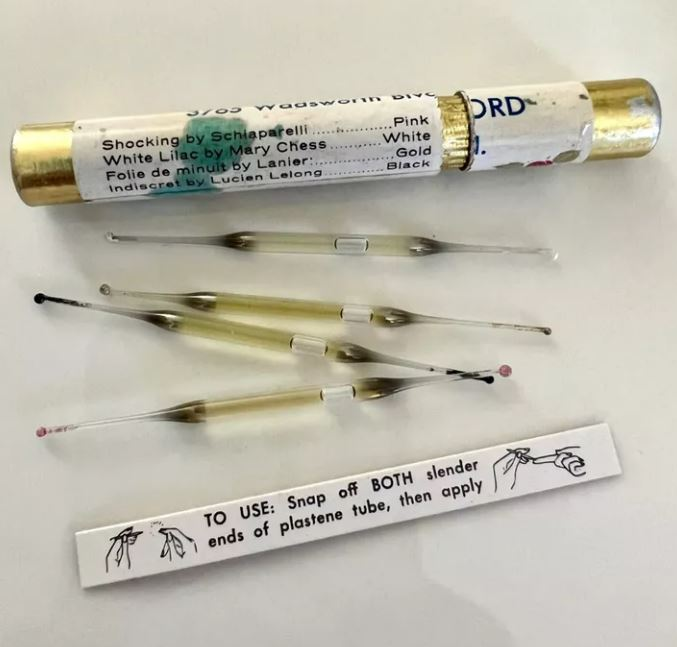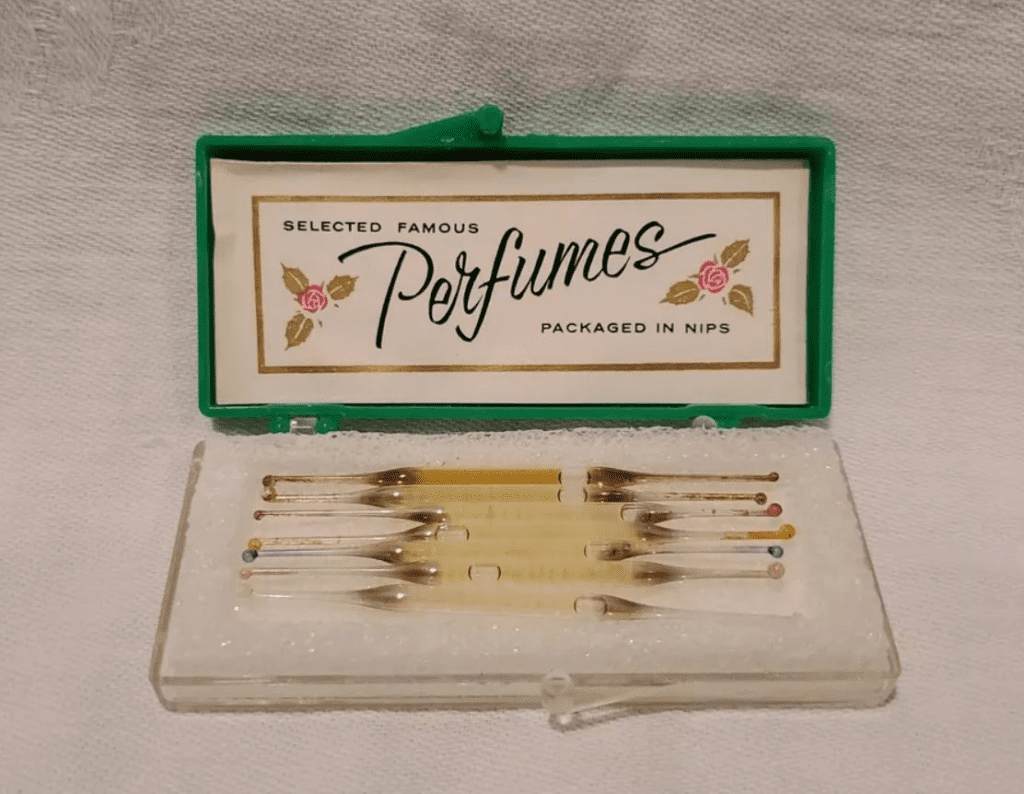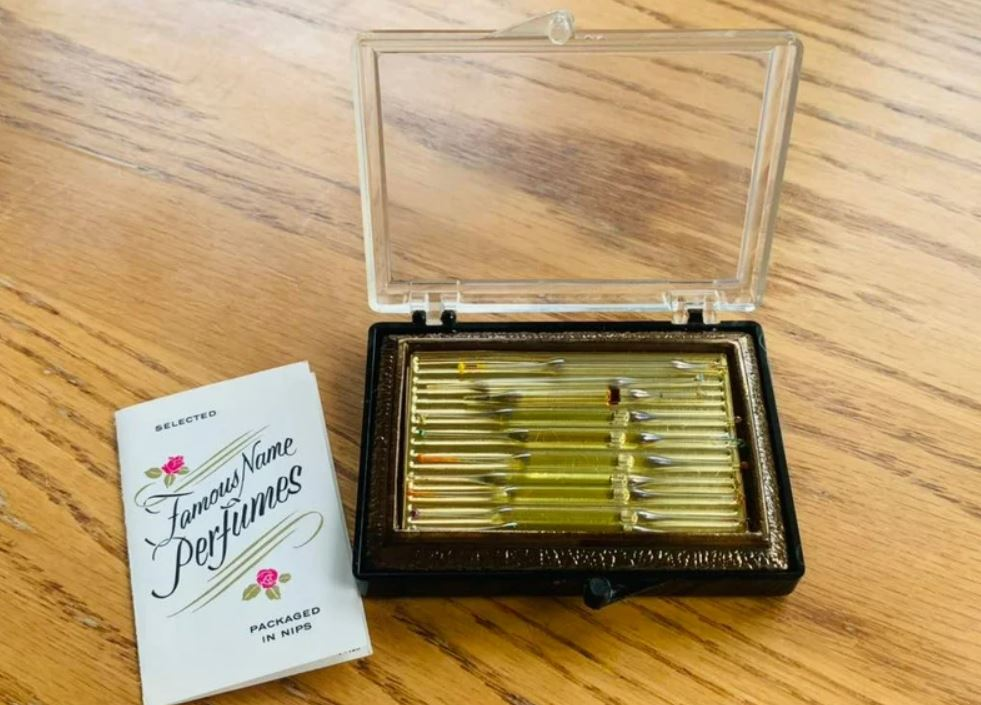Do you ever recall how your mom used to transform her look before heading out? There was always a small, delicately crafted glass vial she would pull from her handbag. With just a flick, the room would fill with the most divine, soft aroma. This tiny vial wasn’t just any ordinary perfume bottle; it was a perfume ampoule, also known as perfume nips. These little glass treasures were the go-to glamour items for women in the ’50s, ’60s, and ’70s. They provided not only an alluring scent but also a touch of elegance and sophistication that would linger for just the day.

What Were Perfume Ampoules?
Perfume ampoules were slender, beautifully designed glass containers filled with just the right amount of perfume for one or two applications. These tiny vials were sealed at both ends, making them compact and easy to carry. Women would simply snap off the colored glass tip to release the fragrance, applying it effortlessly.
In a time when long-lasting fragrances weren’t as common, these ampoules served a crucial purpose: offering a convenient way for women to refresh their scent on the go. They were particularly favored by those who frequently attended events, such as parties or social gatherings, and who needed a quick touch-up. The appeal of perfume ampoules was not just in their practicality but also in their aesthetic charm. The vials, often adorned with wax seals or colored glass tips, were miniature works of art that looked as elegant as the fragrance they contained.
The Post-War Evolution of Perfume Ampoules
The years following World War II saw a transformation in the role of women in society. As they gained more independence and freedom, women sought products that reflected their modern, active lifestyles. Perfume ampoules perfectly met these needs. Unlike the large perfume bottles that sat on vanity tables, ampoules were small, portable, and easy to use anywhere. Women could carry them in their handbags, allowing them to apply their favorite scent at work, during lunch, or even before an evening outing.
Ampoules became a symbol of convenience and elegance. In an era where glamour was becoming more accessible, thanks to the rise of fashion and beauty magazines, perfume ampoules were the perfect way for women to feel sophisticated and refined, no matter where they were. They allowed women to emulate the Hollywood stars of the time, who were always seen as the epitome of grace and allure.
A Glamorous Tool for the Modern Woman
Using a perfume ampoule was not just a practical act—it was an experience. The ampoules themselves were exquisite pieces of glass, adding an element of luxury to the simple task of applying perfume. Women who used them felt an instant connection to the glamour of the mid-20th century, where even the smallest gestures, like dabbing perfume behind the ear or on the wrist, carried a sense of importance.
These little vials made women feel elegant and put-together, whether they were headed to a fancy event or simply freshening up during the day. The glass ampoules, with their delicate design, added a layer of beauty to everyday life, making the act of applying perfume feel almost ceremonial.
A Symbol of Hollywood Glamour
For many women, perfume ampoules were more than just a beauty product—they were a symbol of Hollywood sophistication. Glamour was becoming more affordable and attainable during the mid-20th century, thanks in part to the growing influence of fashion icons and movie stars. Every woman wanted to feel like a star, and perfume ampoules provided a way to achieve that feeling.
The ampoules, with their delicate designs and richly scented contents, made women feel as if they were stepping onto the red carpet themselves. They were a way to channel the elegance of famous actresses like Audrey Hepburn or Grace Kelly, who embodied timeless beauty. With just a small vial in their purse, women could capture a bit of that same magic and feel ready to charm the world with their scent.

Nostalgia and Perfume Ampoules: Memories of a Bygone Era
Looking back, perfume ampoules evoke a strong sense of nostalgia. Many women remember sneaking a spritz from their mother’s or grandmother’s favorite ampoule before a special event, like a school dance or family gathering. Those little vials, often stored carefully in drawers or on vanities, seemed fragile and precious—yet they held the key to feeling grown-up and glamorous for a night.
While perfume ampoules have largely disappeared from daily life, they still hold a certain charm for collectors and enthusiasts. Today, these tiny vials are cherished not only for their rarity but for the memories they evoke of a time when life seemed more elegant, more refined. There’s something about the process of snapping the glass tip and releasing the perfume that makes one pause and appreciate the artistry behind such a simple object.
The Legacy of Perfume Ampoules in Modern Times
Though no longer a common sight, perfume ampoules remind us of an era where beauty and elegance were about more than appearance—they were about the ritual. Applying perfume was not a rushed affair; it was a deliberate, meaningful act. Today, perfume ampoules are highly collectible, admired for their vintage appeal and the stories they carry. They serve as a link to the past, to a time when even the smallest details of life carried a sense of grace and artistry.

Conclusion: The Enduring Allure of Perfume Ampoules
Perfume ampoules may have been a product of the past, but their elegance, charm, and practicality still resonate today. These small, beautifully designed vials were more than just tools for applying fragrance—they were symbols of glamour, sophistication, and a lifestyle where beauty was an art. Rediscovering these forgotten treasures offers a reminder of the timeless allure of simple, well-crafted objects. Whether as collectibles or simply as a memory of a bygone era, perfume ampoules remain a captivating piece of history, reminding us of a time when even the smallest gestures had the power to make us feel extraordinary.


